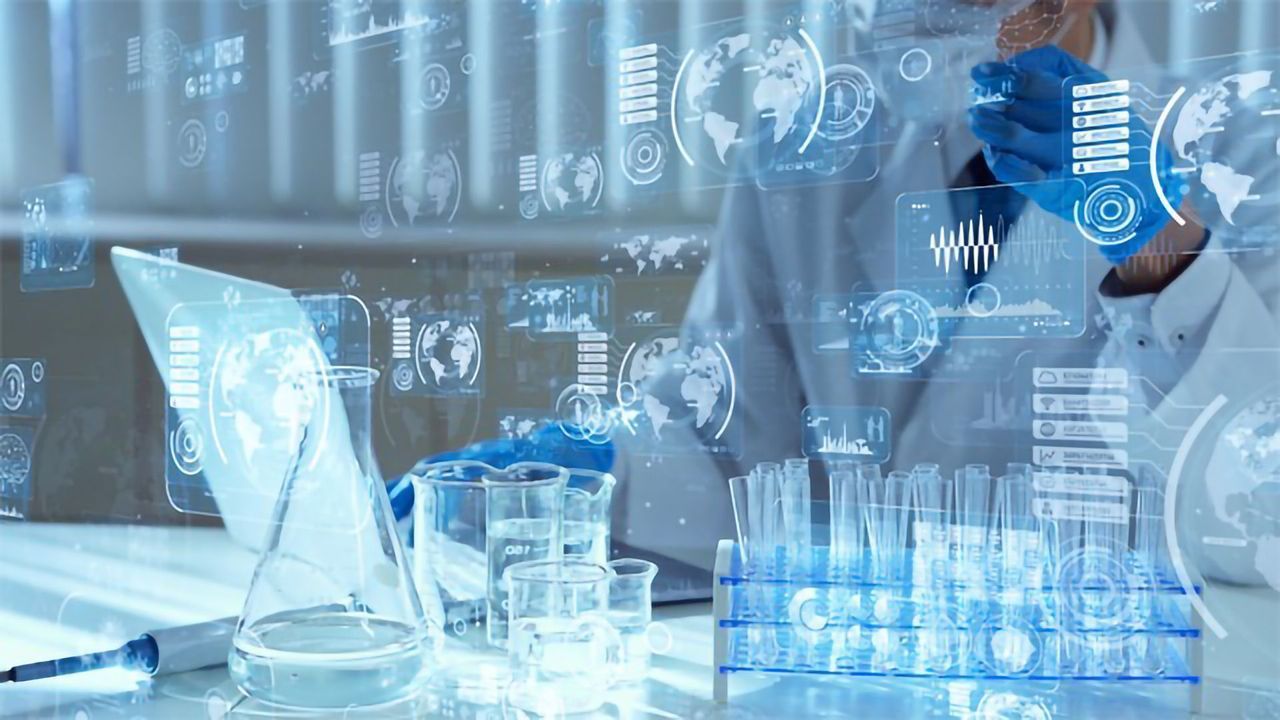
第四次工业革命对研究意味着什么?

第四次工业革命对研究意味着什么?
kate Robinson(kr):您能简要解释第四次工业革命需要什么吗?
Mikael Hagstroem(MH): When we speak of the fourth industrial revolution, we’re referring to the automation and digitalization of traditional manufacturing, industrial and other practices by means of modern smart technologies. We have yet to fully grasp the speed and depth of this revolution. Consider the unlimited possibilities of having billions of people connected in real time, with unprecedented processing power, storage capabilities and knowledge access at their disposal. Or think about the impact from a confluence of disruptive innovations covering wide-ranging fields such as artificial intelligence (AI), the internet of things (IoT), biotechnology, nanotechnology, robotics, 3D printing and quantum computing. As well as technologies that amplify each other in a fusion across physical, digital and biological worlds. Of the many diverse and fascinating challenges we face today, the most important is understanding and shaping the new technology revolution, which entails nothing less than a transformation of humankind. We are at the beginning of a revolution that is fundamentally changing the way we live, work and relate to one another.
KR: Are there any challenges standing in the way of this revolution?
MH: Big data is the new oil and an asset class that is generating economic growth while exposing us to new risks that we need to overcome. These include cyber breaches, data bios and fake news. As we create increasingly powerful technologies, we also risk arming bad actors. It is on us to ensure that a laboratory is being protected from cyberattacks and that the data remains protected, that the usage is compliant and at the same time transparent to authorized stakeholders.
KR: How will the incorporation of advanced technologies further research capabilities?
MH: We are now able to address classes of use-cases with applications that were inconceivable even 20 years ago. We can now move beyond the descriptive reporting of the past to prediction engines and even prescriptive augmentation to speed up decision making. The COVID-19 pandemic is an excellent example. During this global health crisis, more tests have been processed than ever before, the time to develop new vaccines has never been shorter and our ability to treat the infected has greatly improved. It is a great sense of accomplishment to contribute, even in a small way with our laboratory information management system (LIMS), to such heroic efforts. This is only the very beginning for the digital lab of the future, as continuous monitoring and integrated feedback loops become a reality. How are we going to meet the exponentially growing demand for plastic while reducing the negative impact on the planet? BioCarbon like Pyrolysis Oil alone cannot solve the equation without a digital lab continuously recalibrating the production based on its varying impurities. The digital lab can help improve the human condition while helping to save the planet.
KR: How will this development cover the full range of lab operations currently in use?
MH: This question is less futuristic than it might appear, as we are already through the first phase of the digital transformation of the lab. Labs are already rushing to integrate various software solutions (LIMS, electronic laboratory notebook (ELN), laboratory execution system (LES) and scientific data management system (SDMS) etc.) into one common platform. Lab data lakes are being used to accelerate knowledge-sharing and to better integrate data assets, not just within the labs but also between labs. Examples would be in forensics or between lab environments and production environments.
KR: What role will LIMS systems play in this revolution?
MH: You will be surprised to find that 70% of lab workers’ time can be wasted on administrative tasks, preparation work, finding and cleaning data, or reporting. Imagine the impact of turning that equation on its head and thereby tripling the capacity of our lab environments, while empowering the experts to work on their area of expertise and democratize many of the current lab tasks through self-service, etc. Digital transformation starts with integration on to a single common platform, enabling access to the wealth of data assets and that is what a modern LIMS platform provides. We then add content relevant to each individual lab environment through workflows, data assets and collective best practice. This is when the fun starts and the collaboration between humans and machines enables more efficient and effective lab environments. I like to refer to this as the “Digital Lab Twin”. This is what digital transformation is all about.
Mikael Hagstroem was speaking to Kate Robinson, Editorial Assistant for Technology Networks">
填写下面的表格,我们将向您发送PDF版本的电子邮件“第四工业革命对研究意味着什么?”
第三次工业革命预示着变革性技术,例如电子,电信以及后来的互联网。这些工具完全改变了研究的方式。但是该领域现在正在输入第四有望再次改变科学景观的工业革命。LabVantage Solutions,Inc。
,实验室信息学软件解决方案的提供商,通过任命数字化转型的资深人士表示了这一未来的转变Mikael Hagstroem作为新的首席执行官。捷克葡萄牙直播与Mikael交谈以了解更多。
凯特·罗宾逊(KR):您能简要解释第四工业革命的需要吗?
Mikael Hagstroem(MH):当我们谈到第四次工业革命时,我们指的是通过现代智能技术的传统制造,工业和其他实践的自动化和数字化。我们尚未完全掌握这场革命的速度和深度。考虑实时连接数十亿人的无限可能性,并可以使用前所未有的处理能力,存储能力和知识访问权限。或者考虑涵盖诸如人工智能(AI),物联网(IoT),生物技术,纳米技术,机器人技术,3D打印和量子计算等广泛领域的破坏性创新的影响。以及在物理,数字和生物学世界中融合中相互扩增的技术。在我们今天面临的许多多样化和迷人的挑战中,最重要的是理解和塑造新技术革命,这无非是人类的转变。我们正处于一场革命的开始,这从根本上改变了我们的生活,工作和彼此联系的方式。
KR:这场革命有什么挑战?
MH:大数据是新的石油和一种正在产生经济增长的资产类别,同时使我们面临我们需要克服的新风险。这些包括网络漏洞,数据BIOS和假新闻。随着我们创造越来越强大的技术,我们也冒着武装不良演员的风险。在我们身上,确保实验室受到网络攻击的保护,并且数据仍然受到保护,使用情况是合规的,同时又透明了授权利益相关者。
KR:高级技术的合并将如何进一步的研究能力?
MH:现在,我们能够与20年前甚至是不可想象的应用程序的用例讨论类别。现在,我们可以超越过去对预测引擎的描述性报告,甚至超越规范性增强,以加快决策的速度。COVID-19大流行是一个很好的例子。在这场全球健康危机期间,对以往任何时候都进行了更多的测试,开发新疫苗的时间从未缩短,我们的治疗感染能力大大提高了。即使在我们的实验室信息管理系统(LIMS)方面,为这样的英勇努力做出贡献,这是一种巨大的成就感。这只是未来数字实验室的开始,因为持续监视和集成反馈循环成为现实。在减少对地球的负面影响的同时,我们将如何满足对塑料的成倍增长需求?如果没有数字实验室根据其不同的杂质不断重新校准生产,则仅像热解油一样无法解决该方程。数字实验室可以帮助改善人类状况,同时帮助拯救地球。
KR:这种开发将如何涵盖当前正在使用的全部实验室操作?
MH:这个问题不如说明的未来派,因为我们已经进入了实验室的数字化转型的第一阶段。实验室已经急于将各种软件解决方案(LIMS,电子实验室笔记本电脑(ELN),实验室执行系统(LES)和科学数据管理系统(SDMS)等)整合到一个通用平台中。实验室数据湖泊用于加速知识共享,并更好地整合数据资产,不仅在实验室内,而且在实验室之间。示例将在取证或实验室环境和生产环境之间。
KR:Lims系统在这场革命中会扮演什么角色?
MH:您会惊讶地发现,70%的实验室工人的时间可能会浪费在管理任务,准备工作,查找和清洁数据或报告上。想象一下将该方程式转向其头部,从而使我们的实验室环境的能力增加三倍的影响,同时使专家有能力在专业领域工作,并通过自助服务等许多当前的实验室任务民主化。数字化转型始于集成到一个单一的通用平台,使能够访问大量数据资产,这就是现代LIMS平台所提供的。然后,我们通过工作流,数据资产和集体最佳实践添加与每个实验室环境相关的内容。这是娱乐开始的时候,人类和机器之间的协作可以使更有效的实验室环境。我喜欢将其称为“数字实验室双胞胎”。这就是数字转换的全部内容。
Mikael Hagstroem正在与技术网络编辑助理凯特·罗宾逊(Kate Robinson)讲话捷克葡萄牙直播





